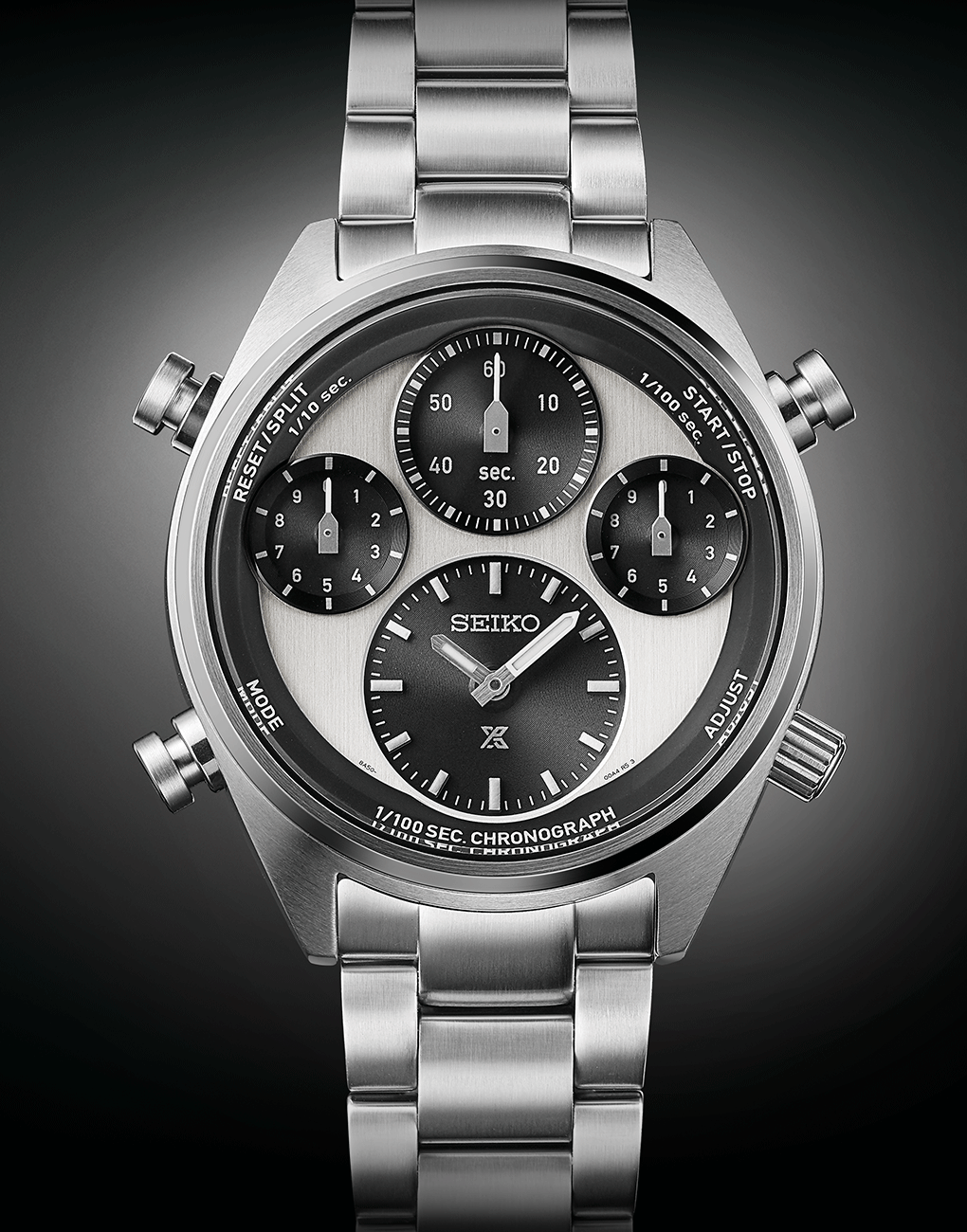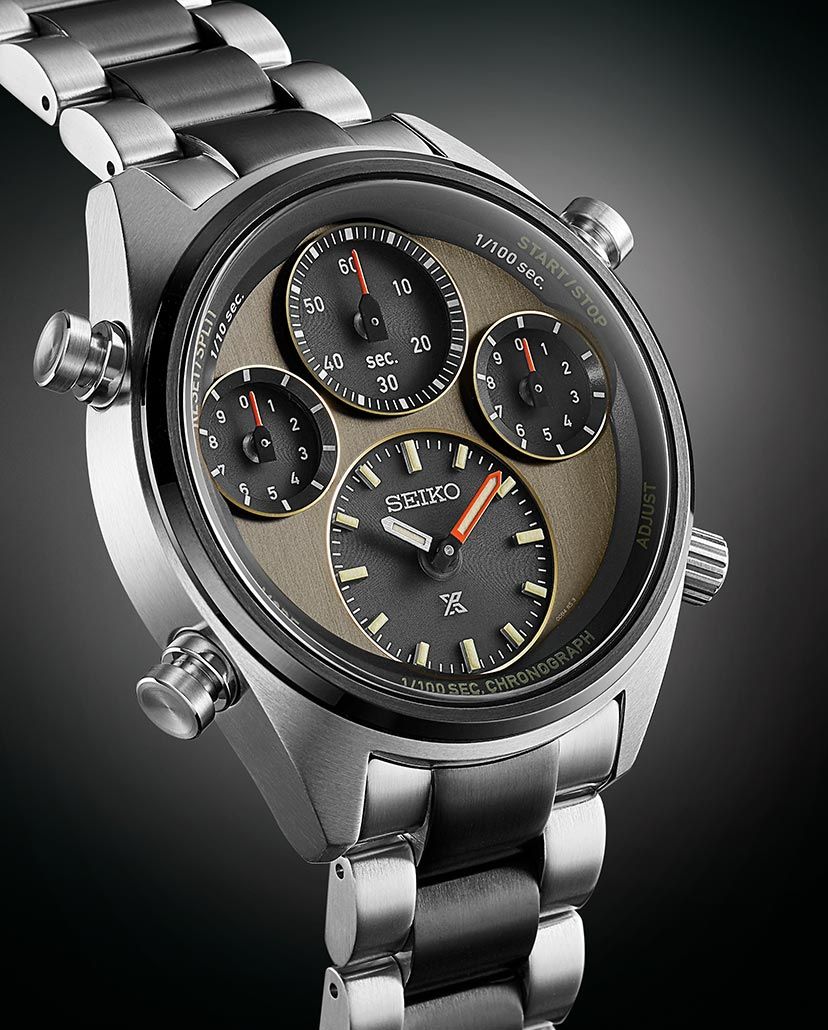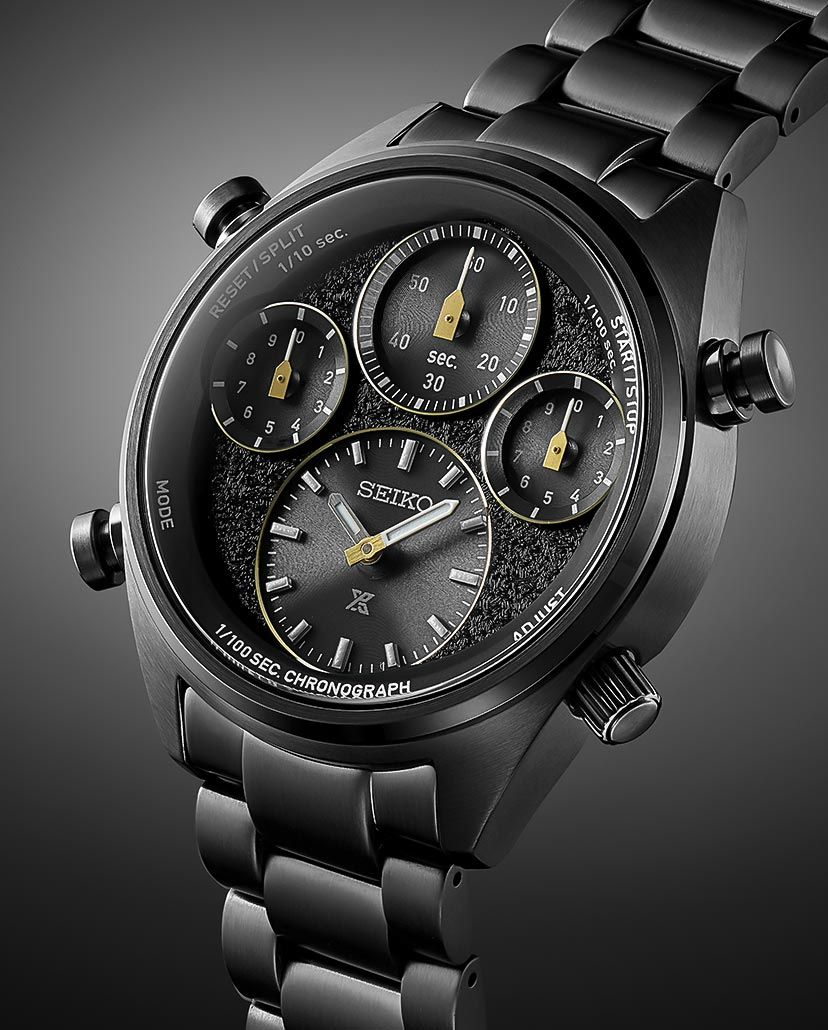SpotlightThe Power Of Four: Seiko’s New Prospex Speedtimer Solar Chronograph
Four new Seiko Prospex Speedtimer Solar Chronographs juggle four sub-dials with elan while celebrating the brand’s contribution to the sporting world
May We Recommend
To kill two birds with one stone—generate buzz around the 2023 Budapest World Athletics Championships (August 19 to 27) as the official timekeeper and to commemorate the 40th anniversary of producing the world first analogue quartz chronograph—Seiko unveiled the Prospex Speedtimer Solar Chronograph in four new iterations. Largely in silvery tones and black with hints of red, the common features between these models consists of a new in-house solar chronograph movement, a dial comprising four sub-dials (including home time), high water resistance, and anti-magnetic properties.

Solar Chronograph: In Continuum With The Brand Philosophy
‘Prospex’—a portmanteau of ‘Professional’ and ‘Specifications’—is a line of iterations cut for high sporty and adventurous activities. The recent quartet bears traces of the earlier Seiko models such as the 1992 Kinetic Chronograph model that also has four sub-dials and a contrasting layout that is also redolent to the Seiko X Giugiaro model in collaboration with Italian car designer Giorgetto Giugiaro. The new Speedtimers consists of two regular production models and two limited editions. Belonging to the former category is the Seiko Prospex Speedtimer Solar Chronograph fully in black (SFJ003) as well as a high-contrast, black-and-white dial (SFJ001). The limited editions are the Seiko Prospex Analog Quartz Chronograph 40th Anniversary Limited Edition (SFJ005) and Seiko Prospex Speedtimer Solar Chronograph World Athletics Championship Budapest 23 Limited Edition (SFJ007). Both titles are self-explanatory.
With 42mm stainless steel case size of 12.9mm thickness, all four models appear hefty and yet smoothy accommodate the new Seiko Calibre 8A50. The dial has four sub-dials, arranged uniquely, with three sub-dials occupying the top section and a largest sub-dial showing the home time, at six o’clock. The solar-powered quartz movement powers a 1/100th-of-a-second stopwatch—sub-dial at three o’clock—precise up to +/- 15 seconds per month. A small drawback: the home time stops when you start the stopwatch. Pushers at two o’clock and 10 o’clock start, stop, and reset time. Upon pressing the ‘mode’ pusher at eight o’clock, the hour hand instantly slides under the minute hand as the chronograph times up to 60 minutes. Simultaneously, the nine o’clock sub-dial gives you the 1/10th of a second, while at 12 o’clock we have the running seconds.
Touted to have a brighter glow than other lume varieties is the Seiko patented luminous paint LumiBrite, applied to the hands and indices. Curved sapphire crystal with antireflective treatment on the inside seals the case and works contributes towards the overall 100m water resistance and 4,800A/m magnetic resistance capabilities of the watch.

Having a slight upper hand among the four models are the two limited editions that directly attribute key milestones in Seiko’s history. Seiko produced the world’s first analogue quartz watch chronograph in 1983, which the SFJ005 iteration pays ode to in the formal title, despite featuring four sub-dials not three like the earlier model. Then, the only all-black beauty from the quartet is the SFJ007, due to a black ‘hard coating’ that envelopes the case and bracelet. In acknowledgement to the brand’s rich sporting history beginning from its timekeeping duties for the 1964 Tokyo Olympics, the sub-dials, and indices of the SFJ007 and SFJ005 models are outlined in gold as a nod to the idea of bagging gold medals. While the Japanese watchmaker mysteriously stays mum about the dial’s texture in SFJ007, it does resemble a running track or the manicured turfs at gymnasiums and stadiums. A final stamp of the brand’s illustrious sporting history is an intricate engraving of the Budapest Championship logo on the caseback.








